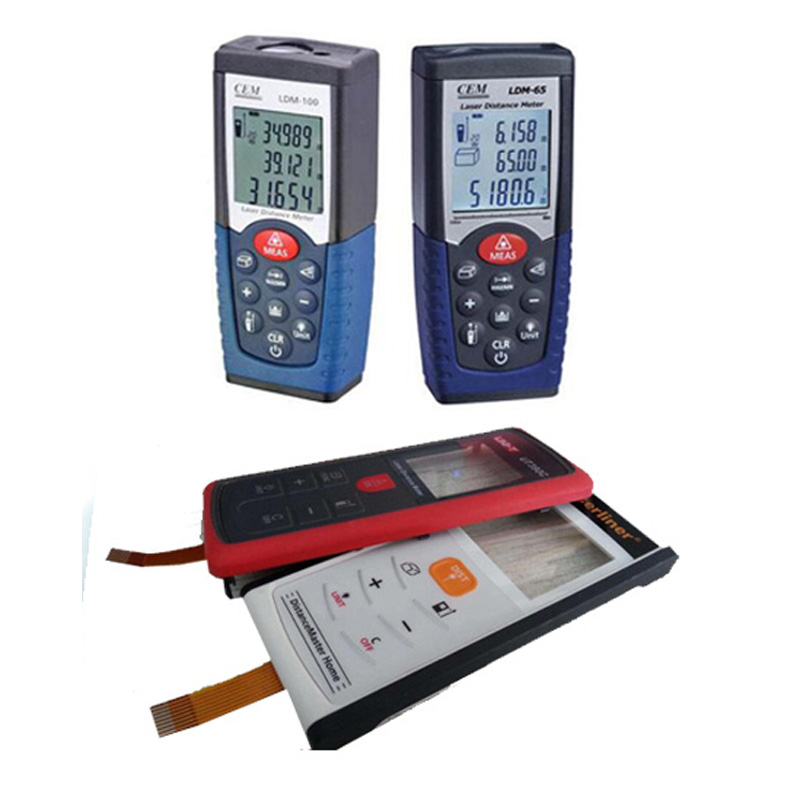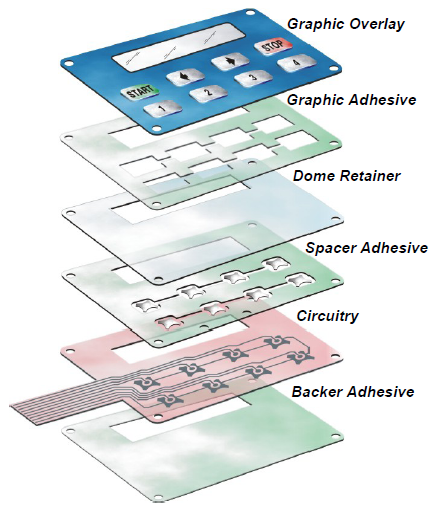The Production Refine Behind Membrane Layer Switch Over: What You Need to Know
The manufacturing procedure behind membrane layer changes combines careful design, material option, and quality assurance. It starts with recognizing the intricacies of membrane layer switch design and advances via various phases, including product options and printing strategies. Each phase plays a crucial role in making sure performance and durability. Nonetheless, the complexities of layer building and the extensive testing requirements may disclose understandings that are not right away evident. What exists past these foundational components?
Recognizing Membrane Layer Change Layout
Membrane switches may appear straightforward at very first glance, their design involves intricate factors to consider that guarantee capability and longevity. The design process begins with a thorough understanding of user needs, including the user interface's designated application and ecological variables. Ergonomics is a crucial element, as the layout has to facilitate simplicity of usage while ensuring that responsive feedback fulfills user expectations.Moreover, the layering of elements, such as graphic overlays, sticky layers, and conductive traces, must be exactly engineered. membrane switch. This layered arrangement not just influences the switch's responsiveness but also impacts its long life. Interest is offered to the sealing strategies utilized to protect against dampness and dust, which could compromise efficiency. In addition, style considerations include visual appeals, where color pattern and visual quality enhance user experience. Inevitably, the style of membrane layer switches equilibriums capability, user experience, and sturdiness, ensuring that they meet the needs of various applications effectively
Products Utilized in Membrane Switch Manufacturing
When choosing products for membrane switch manufacturing, it is important to ponder both efficiency and toughness. The main products consist of polyester and polycarbonate movies, which give flexibility and stamina. These movies are often coated with glue to ensure correct bonding to substrates. Conductive inks, usually made up of silver or carbon, are crucial for producing electrical links within the switch, allowing for reliable operation.Additionally, a safety layer, such as a hard layer, is often put on improve scratch resistance and longevity. The selection of backing material, such as acrylic or foam, can significantly influence the switch's tactile feeling and general individual experience. Numerous ecological variables, consisting of temperature level and moisture, must guide product option to assure peak efficiency in specific applications. Ultimately, the appropriate mix of products adds to the membrane switch's performance and life expectancy, making informed options crucial for suppliers.
The Printing Refine: Creating Graphics and Text
The printing procedure in membrane button production plays a significant duty in creating high-quality graphics and text. Numerous visuals style strategies are utilized to assure aesthetic charm and capability, while cautious ink option techniques are vital for longevity and performance. Understanding these components is essential for attaining finest outcomes in membrane layer switch layout.
Graphic Style Techniques
Graphic design techniques play a crucial function in the printing process of membrane layer buttons, as they define exactly how graphics and text will eventually show up on the end product. Effective visuals design includes the calculated use layouts, fonts, and colors to enhance readability and aesthetic appeal. Developers often use vector graphics for scalability, guaranteeing that images remain sharp at different sizes. Furthermore, interest to comparison and alignment is crucial, as it affects customer communication and aesthetic quality. The unification of branding aspects, such as logos, should be taken care of with treatment to preserve brand integrity. In general, thoughtful visuals style strategies contribute considerably to the performance and attractiveness of membrane layer switches, impacting user experience and product performance.
Ink Selection Approaches
Selecting the proper ink is crucial for accomplishing the preferred visual top quality and longevity in membrane layer button production. Numerous ink types are utilized, consisting of solvent-based, water-based, and UV-curable inks. Each type provides unique characteristics, such as adhesion, versatility, and resistance to ecological factors. Solvent-based inks are frequently favored for their longevity and dynamic shades, while water-based inks are a lot more eco friendly however may have limitations in bond. UV-curable inks provide rapid treating and durable efficiency. In addition, color matching techniques assure that the chosen inks line up with layout requirements. Eventually, the option of ink need to take into consideration variables such as application technique, substrate compatibility, and end-use demands to attain remarkable outcomes in membrane switch graphics and message.
Layer Building And Construction and Setting Up

Material Choice Process
A cautious selection of materials is vital in the production procedure of membrane switches, as it straight affects performance and toughness. The primary products made use of include polyester, polycarbonate, and various conductive inks. Polyester is often favored for its excellent resistance to chemicals and abrasion, making it suitable for harsh settings. Polycarbonate, on the various other hand, offers remarkable clearness and influence resistance, which is valuable for applications calling for visibility and robustness. Conductive inks, commonly made up of silver or carbon, are crucial for producing trustworthy electrical paths. In addition, the choice of adhesive materials affects the overall integrity of the button - membrane switch. Assessing factors such as ecological exposure, tactile feedback, and aesthetic demands overviews makers in selecting the ideal materials for their certain applications
Layer Attachment Methods
Adhering layers in membrane switch building and construction is a vital process that guarantees performance and long life. Various attachment strategies are utilized to protect ideal bonding in between layers, which typically include using adhesives, warm, and pressure. Pressure-sensitive adhesives (PSAs) are typically utilized for their simplicity of application and immediate bonding capabilities. Additionally, thermal bonding strategies can be applied, where heat is used to trigger glue homes, securing a solid bond. The selection of attachment approach mainly depends upon the products entailed and the particular application requirements of the membrane switch. Correct placement and uniform application of adhesives are important to prevent flaws, protecting the switch runs efficiently throughout its desired lifespan.
Quality Assurance Procedures
Guaranteeing high quality control during the layer building and assembly of membrane buttons is essential for keeping efficiency and integrity. This process typically entails several essential procedures, including extensive assessments at each stage of production. Suppliers use advanced screening techniques, such as peel examinations and bond analyses, to confirm the stability of layer bonds. In addition, aesthetic assessments are conducted to identify any type of flaws in printing or product incongruities. Environmental problems, such as click for info temperature and humidity, are carefully kept an eye on to ensure ideal treating and adhesion. Additionally, normal calibration of devices aids keep precise manufacturing requirements. By executing these quality assurance actions, manufacturers can significantly lower the risk of item failing, ensuring that the last membrane switches fulfill the required specs and customer assumptions.
Checking and High Quality Control Steps

Technologies in Membrane Layer Switch Over Technology
As developments in innovation remain to advance, membrane layer switches are gaining from ingenious developments that improve their functionality and individual experience. One significant technology is the assimilation of capacitive touch technology, which enables more user-friendly and receptive customer interfaces. This change not just boosts looks yet additionally lowers mechanical damage, expanding the life-span of the switches.Additionally, innovations in graphic overlay products have caused improved toughness and resistance to ecological aspects such as wetness and UV light. These materials now supply boosted quality and brightness, further raising the aesthetic appeal.Furthermore, the incorporation of smart technology is changing membrane layer switches over right into interactive control panels, enabling connectivity with IoT gadgets. This connectivity cultivates a seamless customer experience, leading the way for applications in various markets, from medical care to consumer electronics. Jointly, these innovations position membrane layer changes as critical parts in modern-day gadget design.
Frequently Asked Questions
How much time Does the Membrane Layer Change Production Process Take?
The duration of the membrane button manufacturing procedure can vary considerably. Factors such as complexity, materials utilized, and manufacturing volume impact timelines, with typical manufacturing ranging from a couple of days to several weeks for completion.
What Are the Typical Applications for Membrane Layer Switches?
Membrane buttons are typically made use of in numerous industries, including automotive controls, home devices, medical gadgets, and consumer electronics (membrane switch). Their versatility and resilience make them ideal for applications calling for easy to use interfaces and reliable performance in varied atmospheres
Can Membrane Layer Switches Over Be Personalized for Specific Requirements?

What Is the Lifespan of a Typical Membrane Layer Switch Over?
The lifespan of a regular membrane layer button varies, however typically, it ranges from 1 to 5 million cycles. Elements such as usage, setting, and worldly top quality greatly influence toughness and total efficiency over time.

Are Membrane Layer Changes Environmentally Friendly?
The environmental kindness of membrane switches varies. Some products utilized might not be recyclable, while others can be green. The overall impact depends on making techniques and products, requiring cautious factor to consider throughout option and disposal. The manufacturing process behind membrane switches why not try here over combines careful layout, product choice, and quality control. It begins with understanding the details of membrane switch layout and advances via various stages, consisting of material selections and printing techniques. When choosing products for membrane layer button production, it is necessary to consider both performance and sturdiness. A cautious selection of materials is necessary in the production procedure of membrane layer switches, as it directly affects capability and sturdiness. The choice of bond method largely depends on the products entailed and the particular application recommended you read needs of the membrane switch.